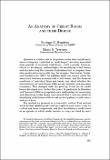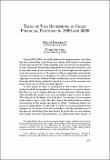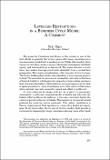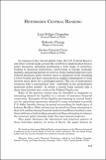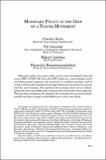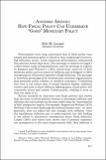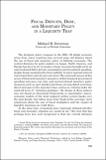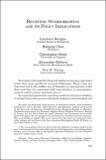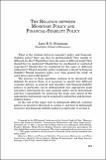Buscar
Mostrando ítems 101-110 de 135
An anatomy of credit booms and their demise
Episodes in which credit to the private sector rises significantly above its long-run trend (that is 'credit booms') are often associated with periods of economic turbulence. Until recently however efforts at developing methodologies for identifying credit booms and characterizing the economic ...
Tales of two recessions in Chile: financial frictions in 1999 and 2009
During 2007-2009 the world underwent a deep economic crisis that has been termed the Great Recession where total output is estimated to have decreased 0.6%. This event has had two salient characteristics: it was a financial shock that originated in advanced economies and in the end most of the economies ...
Leverage restrictions in a business cycle model: a comment
The paper by Christiano and Ikeda in this volume is one of the first efforts to quantify the welfare gains of leverage constraints in a macroeconomic model with a banking sector. Unlike other models their answer is that they can be even more desirable when banks hold little equity and intermediation ...
Inflation targeting in financially stable economies: has it been flexible enough?
The international financial crisis and Great Recession of 2008- 09 called for a range of significant policy measures by central banks beyond aggressive interest rate cuts. Measures have ranged from improving international coordination to purchasing local private loan portfolios and direct intervention ...
Heterodox central banking
In response to the current global crisis the U.S. Federal Reserve and other central banks around the world have implemented diverse policy measures including purchasing a wide range of securities lending to financial institutions intervening in foreign exchange markets and paying interest on reserves. ...
Monetary policy in the grip of a pincer movement
Monetary policy has come under strain since the global financial crisis (GFC) of 2007–09. Once the GFC broke out central banks’ swift and determined response was essential to stabilise markets and to avoid a self-reinforcing downward spiral between the financial system and the real economy. But putting ...
Anchors aweigh: how fiscal policy can undermine 'good' monetary policy
Policymakers have long understood that if fiscal policy runs amuck and monetary policy is forced to raise seigniorage revenues big inflations result. Latin American policymakers understand this outcome better than most. This message is implicit in Cagan’s (1956) initial study of hyperinflation and the ...
Fiscal deficits debt and monetary policy in a liquidity trap
The dramatic policy response to the 2008-09 global economic crisis from many countries has revived some old debates about the use of fiscal and monetary policy in fighting recessions. The central dilemma for policy-makers in Japan North America and Europe has been to try to counter a large recession ...
Revisiting overborrowing and its policy implications
Economies with imperfect financial market access may experience crises that cause significant economic dislocation. These crises are characterized by the sudden stop of domestic or international credit flows and they are associated with large declines in consumption output relative prices and asset ...
The relation between monetary policy and financial-stability policy
What is the relation between monetary policy and financialstability policy? How can they be distinguished? How similar or different are they? Should they have the same or different goals? How should they be conducted? Should they be coordinated or conducted separately? Should they be conducted by the ...

